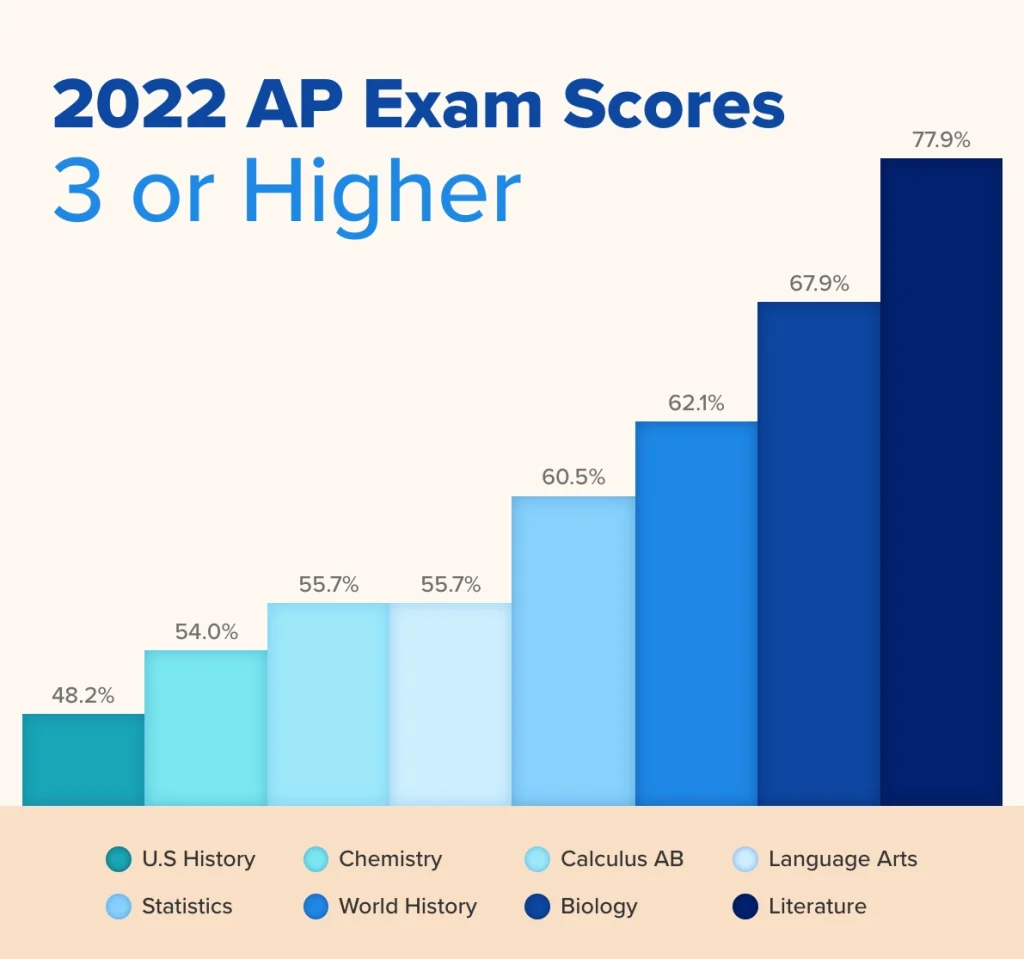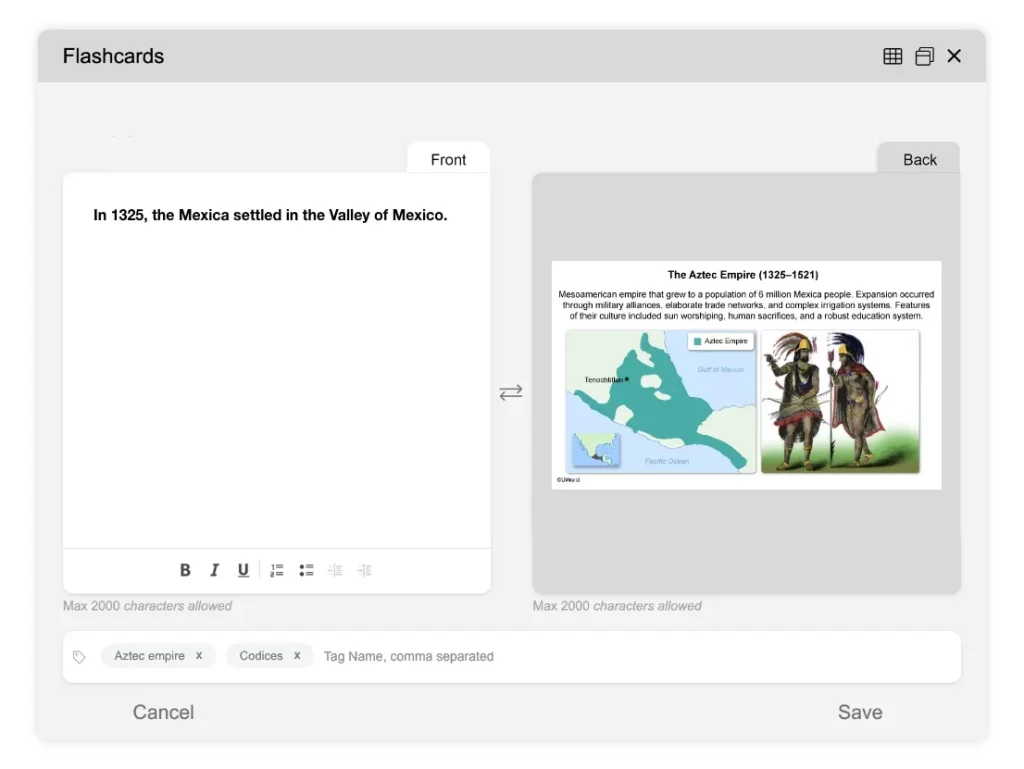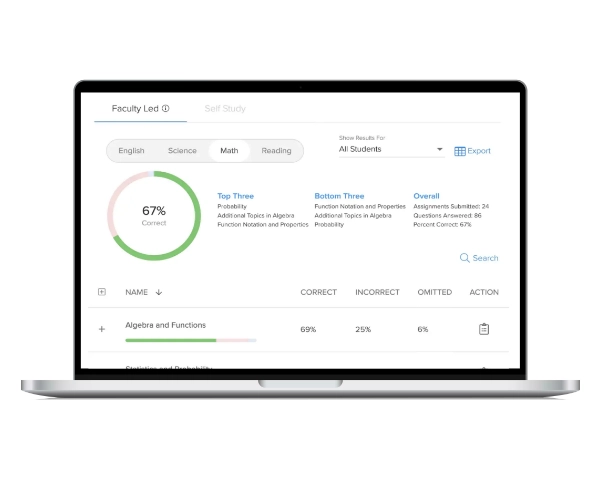New York City’s borough of Manhattan may be packed with extraordinary sights and people, but it’s a strikingly simple place to navigate. This is because in 1811, city commissioners had the foresight to plan how their quickly-growing city would be designed to accommodate future buildings and people. They prepared a grid-based plan of streets and avenues that would come to be known throughout the world as “the greatest grid,” and it would become a defining feature of the city itself.
AP® World History teachers may not need to prepare for centuries of city expansion, but they do have to plan for a rigorous summative review. They understand that a worthwhile content spiral builds upon a learning foundation that allows students to grow as they obtain more information. During the final weeks of spiraling through course material, every course topic must be revisited. Because they understand how difficult the WHAP test is, history teachers are meticulous in their planning. According to the College Board®‘s score distribution report for the 2022 AP exams, 62.1% of students who took the AP World History test passed with the needed score of 3 or higher.1

Student Score Distributions on AP exams (2022)
For AP World History teachers to give their students the best chance to do well on the test, they must carefully plan a challenging final review. We’ve provided five tips for a last-minute AP World History review that can be incorporated into any content spiraling plan in order to make that process a little easier.

Tip 1: Break Curriculum into Smaller, Doable Parts
The main point of the final few weeks of test preparation before an exam is to spiral through all of the course content that may be tested. But when there isn’t much time, it can be difficult to go over everything needed to make sure that students are ready for the assessment. This is why “chunking,” or dividing study material into manageable chunks, is a great test preparation technique, according to a study from the Educational Psychology Review2.
Simply put, breaking up information into manageable chunks can allow students to better understand the subject matter and, as a result, boost their level of confidence. Instead of attempting to cover everything in one review session, teachers can break apart an AP World History unit and work on each smaller section or concept separately. This helps students focus on one subject at a time and enhances their memory of what they have learned.

Another strategy WHAP teachers can use to prepare their students for the test is “interleaving,” or going over a number of related topics at once. Research shows that when teachers “interleave” seemingly different topics, students learn to tell the difference between them and are better able to find and learn from their similarities.2 Teachers can make their students feel better prepared for the AP World History exam by incorporating these test-taking strategies into their lesson plans.
Our choice for an AP World History final review guide: Fiveable
Fiveable’s Study Guide is our pick for the best guide instructors can use when planning for their AP World History test review.
Why We Chose It:
- AP World History study guides are written by knowledgeable instructors and educators
- Addresses issues like time management, how to approach various types of questions, and test-taking tactics
- Provides advice on how to avoid the common errors that students make when taking the WHAP History exam
- Offers interactive learning opportunities through practice questions and tests
Tip 2: Practice with Released Exam Questions
One of the simplest ways teachers can help their students prepare for the AP World History exam is by allowing them to practice on exams that have already been released. It is almost certain that doing so will improve student performance. According to research from the University of Nebraska-Lincoln3, having students practice with realistic test questions, such as those on released exams, raised scores by an average of 15%. Studying with questions that were different from those on the test, however, only led to a 6% improvement in test results.
Our choice for released exam questions: The College Board secure released exams
The best place to get released AP exams is directly from the source, so The College Board is our top choice for a released exam resource. Although the released AP exams are not available to students, AP teachers can use them as a part of their AP World History final review. Along with other recently released questions, these exams have also been made available in AP Classroom and the AP Question Bank. 4 AP World History instructors can find out more about the released exams in the AP Classroom User Guides.
Why We Chose It:
- They are a reliable and authentic source because these are actual exam questions from prior years
- Follow the WHAP exam’s current format and structure, including the number, type, and time constraints
- There are various question types and topics in the previous exam questions
- Designed to cover a range of difficulties, from simple to difficult

Tip 3: Multiple-Choice Practice Makes Perfect
Naturally, practicing with multiple-choice questions is a crucial component of preparing for the AP World History exam. While spiraling through review material, WHAP teachers should make an effort to get their students to complete at least two multiple-choice questions each day. Exit tickets or bellringers with multiple-choice questions can help students review important concepts that may be covered on the test.
Students can develop the habit of using annotations, paying attention to context cues, and eliminating answers that are obviously incorrect by regularly practicing with multiple-choice questions. This habit will increase their test-taking efficiency and accuracy. Practice with multiple-choice questions can help students become better at time management and more accustomed to the pace of the test.
Our choice for multiple-choice practice: UWorld
Our top pick for the best multiple-choice practice resource is UWorld’s Learning Tools for AP Courses. Incorporating multiple-choice questions into a last-minute AP World History review is a great idea.
Students using UWorld’s multiple-choice questions receive excellent explanations. With the aid of adaptive learning technology, each lesson is altered to provide students with practice that is specific to their level of comprehension. As they prepare for the WHAP exam, students can use it throughout the entire year to review what they’ve learned, identify their areas of strength and growth, and broaden their knowledge and skill sets. It also gives students a quick way to review ideas and practice multiple-choice questions during the final weeks of test preparation.
Why We Chose It:
- Provides students with immediate feedback and a breakdown of acceptable and unacceptable responses. By receiving in-depth explanations for AP World History questions, students can improve their understanding of the underlying concepts and advance their problem-solving abilities with the assistance of the feedback
- It offers hundreds of multiple-choice practice questions and exhaustive coverage of every subject on the WHAP test
- Practice questions are timed, which helps students get ready for the AP World History exam’s time restrictions and enables teachers to gauge how well their students will perform on the test in the allotted time
- Enables teachers to select specific subjects and question types for their students to practice, enabling personalized practice sessions. This makes it possible for teachers to focus their AP World History test review on the areas in which their students most need help and ensures that they are well-prepared for the exam

Tip 4: Greater Understanding with Justifications – Studying for DBQs
One of the most obvious differences between education today and education a few decades ago is understanding the importance of understanding. Teachers need to go beyond simply providing the solution in order for students to truly comprehend a concept. Giving students plenty of opportunities to justify their responses is important when preparing for the AP World History test. According to a study that was published in the Journal of Computer-Assisted Learning5, students who had to justify their answers to questions had a better understanding of the material than those who were only required to provide answers. If written explanations are included in the learning process, students may understand the material more clearly and remember it for longer.
Having students justify their answers in writing will prepare them for free-response questions, too. Providing online examples of excellent FRQ responses will also help students do well on the WHAP exam. Teachers and students can work together to come up with ideas for FRQ answers by looking at sample questions.
Our choice for additional DBQ practice: Freeman-Pedia
Freeman-Pedia is a great place to practice DBQs for the AP World History test because it has a large number of document-based questions, scoring rubrics, examples of good essays, and tips and strategies to help students get better at analyzing primary and secondary sources.
Why We Chose It:
- Provides a wealth of resources and guidance on all aspects of the AP World History exam, including FRQs and DBQs
- Offers detailed explanations and examples of how to approach and structure FRQ and DBQ responses to maximize points
- Includes practice prompts and sample responses, with grading rubrics and scoring guidelines provided
- Created and maintained by an experienced AP World History teacher, with input and contributions from other teachers and students
Tip 5: Repetition with Flashcards
When reviewing previous course material and reviewing important vocabulary terms, repetition is a great tool for content retention. Students can learn actively with the aid of flashcards, and repeated retrieval practice improves their memory over time. According to the Central Penn College Learning Center, “Flashcards help students to engage in active recall or a process wherein students actively engage in learning by stimulating our memories and creating lasting connections to the material.”6
Teachers should go over a variety of ideas and important vocabulary words with their students as they get ready for the AP World History exam. By participating in flashcard-based activities, students can keep their attention and motivation while reviewing these concepts in class. Consistent flashcard-based review exercises in WHAP classes can help students remember and retain crucial course material, regardless of whether they are used to having students study flashcards independently or include them in group review activities.
Our recommendation for AP World History flashcards: UWorld
Our top pick for a source of AP World History flashcards is the UWorld flashcards feature. The UWorld flashcards feature is a versatile and useful way for students to review and advance their understanding of the material. They can design their own slide shows and concentrate on specific course material. It is a good way to study for the AP World History exam because it is easy to use and has a flexible flashcard feature.

Teachers can also give students different review tasks that require them to use paper flashcards. Here are some suggestions for how to use them in your AP World History final review.
Memorization is Less Important Than Understanding
Try to relate information to other ideas rather than just memorizing it to deepen your understanding of the subject.
DIY Flashcards
Creating your own flashcards helps you retain information better as it forces you to engage with the material and puts the content in your own words.
Use Both Pictures and Words
Making connections between the linguistic and visual representations of the information on your flashcards by including both text and images can help with retention and recall.
Use Flashcards for Fun Review Games and Activities
Making flashcard review more entertaining and engaging can increase learning retention and foster a more positive attitude toward learning. This is accomplished by incorporating games or other enjoyable activities.
Try to relate information to other ideas rather than just memorizing it to deepen your understanding of the subject.
Creating your own flashcards helps you retain information better as it forces you to engage with the material and puts the content in your own words.
Making connections between the linguistic and visual representations of the information on your flashcards by including both text and images can help with retention and recall./p>
Making flashcard review more entertaining and engaging can increase learning retention and foster a more positive attitude toward learning. This is accomplished by incorporating games or other enjoyable activities.
Bonus Tip: Prepare Students with Test Day Reminders
This last piece of advice may seem more like general test-taking guidance than a tip for last-minute AP World History review, but it’s important to go over what students must do and bring on test day. Each year, students forget to bring a pencil to their Advanced Placement exams, they forget to turn off their phones, or they arrive late. However, according to a study by The College Board7, students who arrived on time and had everything they needed for their AP exam performed 20 points better on average than those who were late or had forgotten their supplies. Review a preparation checklist for the AP World History exam with your students, as well as a list of the supplies they’ll need on test day.

Checklist of Reminders for AP World History Students
The Day Before the AP World History Exam:
Gather your materials and get ready for the test
Avoid overstudying for the test
Drink plenty of water and consume a balanced meal
Spend some time unwinding and doing stress-relieving activities
Review testing strategies
Make sure to double-check the exam’s location and start time
Set several alarms to ensure that you awaken on time
Put a valid photo ID in your bag along with everything else you’ll need
Make travel plans to the examination location
The Day of the AP World History Exam:
Bring a pen with black or dark blue ink
Bring a valid photo ID issued by the government
Bring the AP student packet you were given, which contains the AP number label and a demographics sheet
Bring your exam ticket or confirmation of registration with you
Bring a watch with you to keep track of the time
Bring some water and a snack. These must be kept on the ground the entire test, and only touched during breaks
Key Takeaways
Teachers who want to give their students the best AP World History final review should not underestimate the importance of the last few weeks before the exam. WHAP teachers can use the five suggestions in this article to help their students feel more confident and prepared for exams.
Learn more about how we strive to support AP teachers who want to make a difference in the lives of their students with our Learning Tools for AP Courses.
References
- Student Score Distributions* AP exams – May 2022. (n.d.). Retrieved March 22, 2023, from https://apcentral.collegeboard.org/media/pdf/ap-score-distributions-by-subject-2022.pdf
- Rohrer, D. (2012, July 28). Interleaving helps students distinguish among similar concepts – educational psychology review. SpringerLink. Retrieved March 21, 2023, from https://link.springer.com/article/10.1007/s10648-012-9201-3
- The effects of age and professional expertise on … – Wiley Online Library. (n.d.). Retrieved March 22, 2023, from https://onlinelibrary.wiley.com/doi/abs/10.1002/acp.1467
- Formative assessment. AP For All. (n.d.). Retrieved March 29, 2023, from https://apforallnyc.com/formative-assessment/
- Let me explain! the effects of writing and … – Wiley Online Library. (n.d.). Retrieved March 22, 2023, from https://onlinelibrary.wiley.com/doi/10.1111/jcal.12608
- Libguides: Learning Center – Study Skills: Flashcards. Flashcards – Learning Center – Study Skills – LibGuides at Central Penn College. (n.d.). Retrieved March 22, 2023, from https://guides.centralpenn.edu/c.php?g=695569&p=4999857
- Source: College Board. (2021). AP Exam Score Distributions. Retrieved from https://reports.collegeboard.org/media/pdf/2021-ap-student-score-distributions_1.pdf




